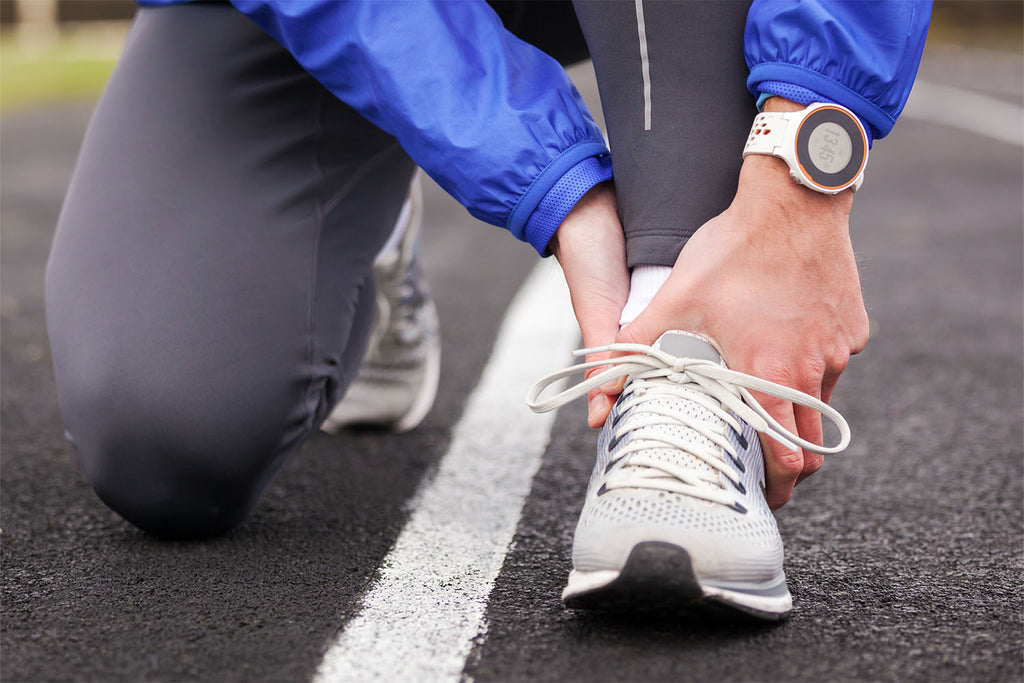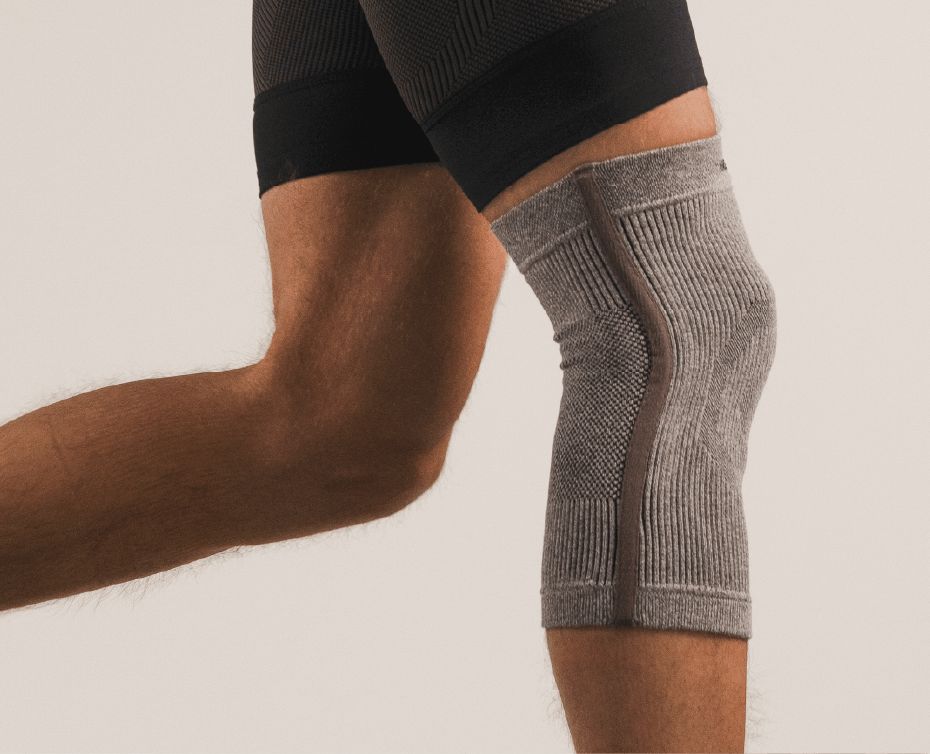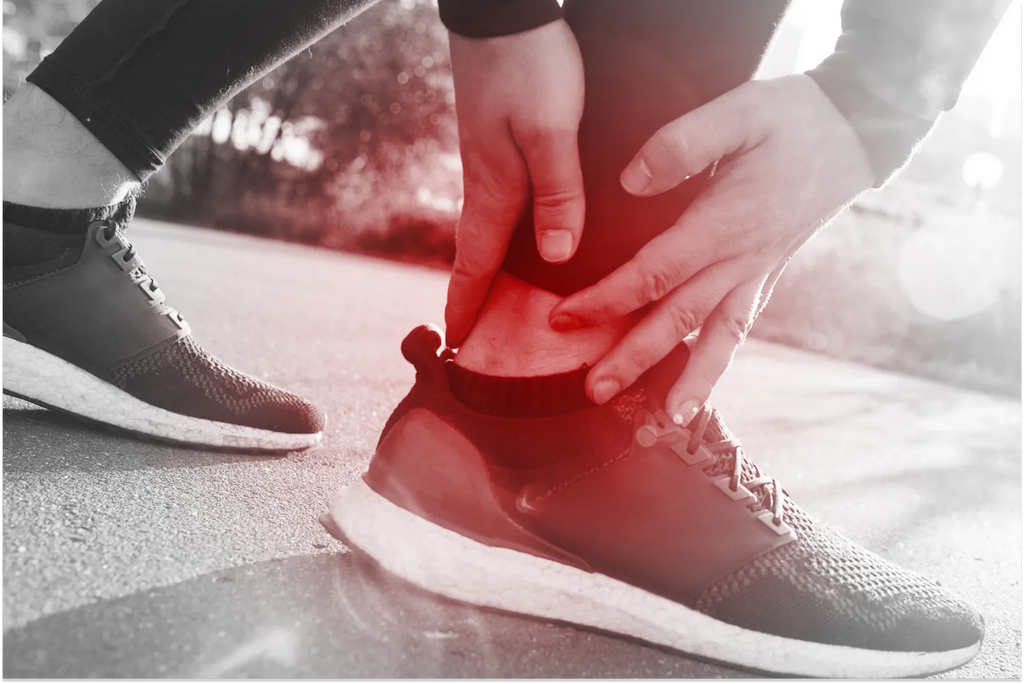Medically Reviewed By | Johannah Gregg, DNP FNP-C
Running is a great way to stay in shape and improve overall well-being. But, it can sometimes lead to annoying niggles and pains, and ankle pain is a common complaint among runners of all levels. You're not alone if you’ve ever felt that sharp twinge or a dull ache in your ankle while running. But the good thing is that ankle pain doesn’t have to distract you. Understanding the causes and implementing some preventative measures can keep your runs smooth and pain-free.
Exploring Ankle Pain Associated with Running
Ankle pain is so common among runners that it affects up to 50% of all runners at some point. It can strike anywhere around the ankle joint, from the front to the sides to the back. Although a certain degree of discomfort is normal after a run, persistent or sharp pain can have a potential underlying cause.
Understanding the cause of your ankle pain is important to start the healing process. Is it a sudden, sharp pain hinting at a possible injury? Or a more gradual pain caused by overuse? The location of the pain can sometimes provide a hint about the underlying cause.
The pain may be constant, or it might only bother you during certain activities, like pushing off during your run or going downhill. It could also be worse in the morning after a run or gradually worsen throughout your workout.
In some cases, ankle pain can appear along with additional symptoms like swelling, bruising, stiffness, or even a popping or snapping sensation. If you experience any of these alongside your ankle pain, you should consult a healthcare professional for a proper diagnosis.
Causes of Ankle Pain from Running
Ankle pain associated with running can have different root causes. Understanding them can help you tackle the issue effectively. Let’s explore some specific types of pain they cause and the underlying reasons behind them.
Ankle Strain
An ankle strain is basically the small tears in the muscles or tendons surrounding your ankle joint. It usually occurs when your foot rolls inward or outward abruptly, causing these tissues to overstretch or tear. This can happen due to uneven terrain, a sudden change in direction, or weak ankles that struggle to maintain balance.
Symptoms of an ankle strain typically include localized pain, tenderness, and possibly some swelling. The pain is usually sharp and might worsen with movements like pushing off while running. Compared to a sprain, strains have less swelling and bruising and allow for some weight-bearing.

Ankle Sprain
This is a more severe injury than a strain, and it involves a stretched or torn ligament in your ankle. It usually happens when your ankle twists beyond its normal range of motion due to a misstep on uneven ground or an awkward landing.
Common signs of a sprain can be pain, swelling, bruising, and difficulty bearing weight on the affected ankle. The pain might be throbbing or sharp, and depending on the severity, even standing might be uncomfortable.

Tendinitis
Tendinitis is the inflammation of the Achilles tendon, the connective tissue attaching muscle to bone. Achilles tendinitis affects the tendon at the back of the heel and is a frequent cause of pain. This condition arises from overuse, putting excessive pressure on the tendon through repetitive movements like running, especially if you suddenly increase your mileage or intensity.
Pain, stiffness, and tenderness around the affected tendon are common signs of tendinitis. The pain usually worsens in the morning or after a run and might improve with light activity. Unlike strains and sprains, tendinitis doesn’t come with swelling or bruising.
Stress Fracture
Stress fractures occur when repetitive pressure causes small cracks in the ankle bone. Runners who increase their mileage too quickly, have an improper running form, or lack proper footwear are more likely to get stress fractures.
Pain that worsens with activity and gradually increases in intensity is a key indicator. Compared to sprains or strains, the pain associated with a stress fracture might not be localized to a specific area and may somewhat ease with rest. However, any activity that puts weight on the ankle can aggravate the pain.
Prevention of Ankle Pain from Running
Even though the first thing you can do to prevent ankle pain is avoid it, sometimes you cannot, especially while running. There are some common yet important methods you can consider to prevent an ankle sprain from becoming an obstacle in your running. These methods are:
Choosing the Right Running Shoes
Your shoes are the most important factor when running. Investing in a good pair of running shoes specially designed for your foot type and running style is the best way to prevent ankle pain.
Consider these three things when choosing the right running shoes:
- Support: Your shoes should provide adequate arch support specific to your foot type (flat, high arches, or neutral). Supportive shoes will help maintain proper alignment and prevent excessive inward or outward rolling of your ankle.
- Cushioning: The level of cushioning you need depends on your running style and terrain. Buy well-cushioned shoes if you run on hard ground, like pavement. You can invest in shoes with more aggressive treads for better traction for trail running.
- Fit: TYour shoes should fit you perfectly but not be constricting, with enough room for your toes to wiggle. Visit a reputable running store where experts can check your gait and recommend the perfect shoes for your needs.
Replace your shoes regularly every 300-500 miles, as worn-out shoes lose their shock absorption capabilities and can cause ankle pain.
Proper Running Techniques
Running forms play an important role in preventing ankle pain. Sometimes, you may unknowingly misstep or twist your ankle while running. So, here are some tips to improve your technique:
- Land on the midfoot rather than the heel or forefoot. This helps distribute impact forces more evenly across your foot and ankle.
- Take shorter, quicker steps to reduce the amount of pressure placed on your ankles with each step.
- Avoid hunching forward when you run. Keep your core engaged and maintain a tall posture for better balance and stability.
- Maintain good posture by keeping your head up and looking ahead, not down at your feet.

Regular Exercise and Stretching
Stronger ankles are less vulnerable to injury. Including some exercises and stretches into your routine can benefit you. Exercises that target your calf muscles, peroneals (muscles on the outside of your ankle), and tibialis anterior (muscle on the front of your shin) will improve stability and support. Also, regularly stretch your calves, hamstrings, and quads to improve your flexibility and different movement patterns. This will also reduce tightness that can cause ankle pain. Do some effective stretching before your run and static stretches after your run for better results.

Use of Ankle brace
Ankle braces can provide additional support and stability, particularly if you have a history of ankle sprains or weaknesses. However, they shouldn’t be a permanent solution. Relying on a brace for everyday running can weaken your ankle muscles in the long run. Use a brace during recovery from an ankle injury or for specific situations like running on uneven terrain, where your ankle might need extra support.
Treatment for Ankle Pain from Running
The treatment for ankle pain from running depends on the specific cause and severity of the injury. While some pains can be treated at home, others might need a doctor’s attention.
Some of the common treatment methods are:
Rest and Recovery
Sometimes, the simplest remedy is the most effective. When you are suffering from ankle pain, prioritize proper rest. Depending on the severity of the pain, reduce your running mileage or take a complete break for a few days. Listen to your body. Running through pain can worsen the injury and lead to a longer recovery time.
To treat ankle pain and speed up the recovery stage, follow these tips:
- RICE: This acronym stands for Rest, Ice, Compression, and Elevation. Apply ice packs wrapped in a thin towel to the affected area daily for 15-20 minutes multiple times in the first 24-48 hours. Compression with an elastic bandage or sleeve can help reduce swelling. Keep your ankle elevated above your heart whenever possible to boost the drainage of excess fluid.
- Pain Relief Medications: Pain relievers like ibuprofen or acetaminophen can help manage pain and inflammation if you are in extreme pain. However, follow the recommended dosage and consult your doctor first if you have any other health conditions.
Physical Therapy
Physical therapy is also another way to achieve faster and more complete recovery from ankle pain, mainly for persistent or recurrent pain. A physical therapist will evaluate your ankle pain, identify the cause, and treat you accordingly.
The treatment plan might include:
- Specific Exercises: Strengthening exercises can improve the strength and stability of the muscles around your ankle joint. These exercises will target your calf muscles, peroneal muscles, and tibialis anterior to build strength and resilience.
- Manual Therapy Techniques: A physical therapist might use manual therapy techniques like massage or joint mobilization to improve flexibility and movement patterns in your ankle joint. This can help reduce the pain and stiffness associated with the injury.
- Modalities: Therapists can also use modalities like ultrasound or electrical stimulation to speed up healing and reduce inflammation. Ultrasound can help improve blood flow to the injured area, and electrical stimulation can help decrease pain and muscle spasms.
Apart from these techniques, a physical therapist can also educate you on proper running form, gait analysis, and injury prevention strategies to help you return safely and confidently. They can guide you through a safe return-to-running program, gradually increasing your mileage and intensity to avoid re-injury.
Exercises For Runners With Ankle Pain
Ankle pain can disrupt your daily running routine. However, some exercises can strengthen your ankle, improve its stability, and reduce your risk of future pain.
Some effective exercises you can do are:
Arch Lifts
These exercises target the muscles that support your arches, promote stability, and prevent excessive inward or outward rolling of your ankle.
How to:
- Stand/sit with your feet flat on the floor, toes pointed forward.
- Without curling your toes or rolling your ankles, slowly lift your arches off the ground, engaging your foot muscles.
- Hold for a few seconds, then slowly lower your arches back down.
- Repeat 10-15 times and do 3-4 sets.
Side Plank Clamshells
This strengthens your glutes and the muscles on the outside of your ankle joint. Your ankle’s overall stability will be improved.
How to:
- Lie on your side with your hips stacked and elbows directly under your shoulders, supporting your upper body.
- Keeping your feet together and core engaged, lift your top knee up slightly, opening your hip in a clamshell motion.
- Hold for a second, then lower back down.
- Repeat 10-15 times on each side for 3 sets.
Single Leg Bridges
This exercise strengthens your hamstrings and glutes, which are very important for ankle stability during running.
How to:
- Lie on your back with your knees bent and feet flat on the floor.
- Lift one leg straight up towards the ceiling.
- Keep your core engaged, back pressed into the floor, and lift your hips off the ground, forming a straight line from your shoulders to your knee.
- Hold for a second, then slowly lower your hips back down.
- Repeat 10-15 times on each leg for 3 sets.
Single Leg Heel Raises
This one strengthens your calf muscles, which are important for ankle stability and shock absorption during running.
How to:
- Stand holding onto a wall or chair for balance.
- Life one heel off the ground, raising yourself onto the ball of your foot.
- Hold for a second, then slowly lower your heel back down.
- Repeat 10-15 times on each leg for 3 sets.
Extra Tips to Prevent Ankle Injuries While Running
Apart from the above strategies, there are some more factors you should also consider to keep your ankle happy and healthy and protect it from further injury.
- Excess weight puts extra pressure on your ankle joints, including your ankle. So, maintain a healthy weight.
- Mix up your workouts with activities like swimming or cycling to give your ankles a break while maintaining overall fitness.
- Dedicate sufficient time to a proper warm-up and cool-down routine before and after every run.
- Stay hydrated and eat a balanced diet to give your body the nutrients it needs to recover and prevent injuries.
- Don’t push yourself too hard or too fast. Pay attention to your body’s signals and take rest days when needed.
Frequently Asked Questions
What causes ankle pain when running?
Ankle pain can arise from:
- Overuse injury
- Improper footwear
- Biomechanical issues
- Weak ankles
- Sudden changes in terrain
It can also be caused by injuries like:
- Ankle strains
- Ankle sprains
- Tendinitis
- Stress fractures
How can I prevent ankle pain when running?
Focus on proper running shoes, strengthening exercises, regular stretching, and a gradual increase in mileage. Listen to your body, maintain a healthy weight, and vary your running terrain to keep your ankles challenged and healthy.
What are some treatments for ankle pain caused by running?
The RICE method (rest, ice, compression, and elevation) is a great first step. Physical therapy can be highly effective for strengthening, improving mobility, and promoting healing. In some cases, a healthcare professional might recommend pain medication or orthotics.
Can running shoes affect ankle pain?
Yes, running shoes can affect ankle pain. Improperly fitted or worn-out shoes can cause imbalance and poor mechanics, which ultimately puts pressure on your ankles. Choose shoes with good support for your foot type and replace them regularly to keep your runs pain-free.
How can I strengthen my ankles for running?
Include exercises targeting your calves, peroneal, and tibialis anterior. Calf raises, single-leg bridges, and side plank clamshells will improve stability and reduce your risk of ankle pain.
Read more

Medically Reviewed By | Johannah Gregg, DNP FNP-C Ankle sprains are among the most common injuries for athletes and anyone who enjoys physical activity. The sharp pain that shoots up your ankle is ...

💪 From Marine Corps Officer to Elite Bobsledder! Discover Riley Tejcek’s inspiring journey, how she breaks barriers in sports & service, and why she trusts Incrediwear for peak performance. 🚀 #...






Leave a comment
All comments are moderated before being published.
This site is protected by hCaptcha and the hCaptcha Privacy Policy and Terms of Service apply.